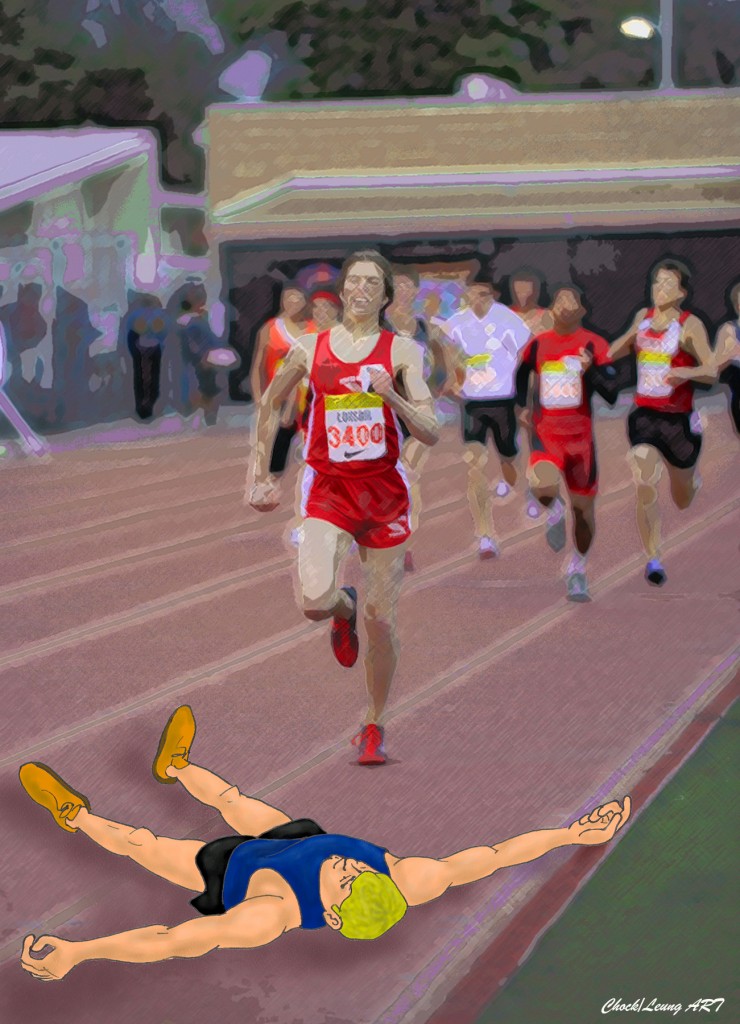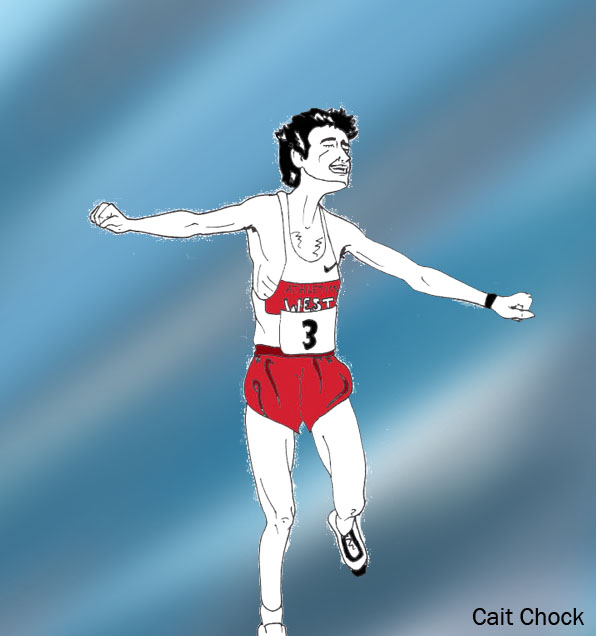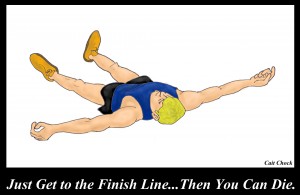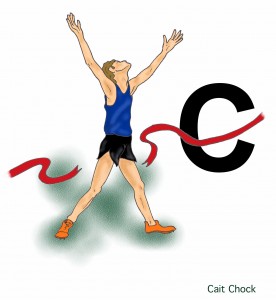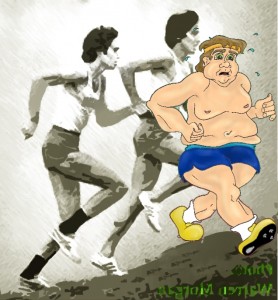There aren’t any ref’s in track or cross country, or road races for that matter, but should there be?

Check out my little bro on the left, yo! 😉
I know there are plenty of elbows being jabbed in some of those tight, jostling packs of harriers. Sure there is a general code of conduct but truth be told some of those European and high stakes track races can get downright cagey. Runners fighting for their personal space, positioning, afraid of getting boxed in and a part of racing is being tactical and making sure that you ARE in the position to make a move if you need to be.
How far is too far though, and when is being an assertive or ‘defensive’ runner crossing the line into being just a downright boxer or ‘sketchy’ runner?We’ve seen runners go down during a race, of course there are the accidents, but sometimes there can be a few brow raises and fingers pointed.
Elbows and runners right up on your heels isn’t only relegated to world record paced runs and it’s something anyone at any age can deal with. The first time I got a swift elbow to the side on a high school cross country course I was a little shocked, then mad, but later realized that it wasn’t necessarily personal and that if you’re all in it to win it you need to be prepared to fight for your positioning.
There is a difference between being a running bully and carving yourself out a good position…you don’t want to be all set to dig for the extra gear but be stuck right up by the rail with no way to pass your competition!
* Defensive runner: the gun goes off and you get out fast enough so as not to get stuck at the back, naturally there is a bigger group at the onset so be prepared for a little hustle and bustle. The longer the race usually it’s not as crucial to establish a spot at the onset for fear of the ‘box in’, but here are times where you might have to have those arms swinging just a little wider and be extra aware of the people around you and how much space there is between you guys.
* Running bully: it’s down to a two person race, both runners are making a drive for the homestretch, and if an arm goes out to obviously stop from being passed…that’s not cool. The same might be said for the lead runner purposefully running extra wide to make it even harder to be passed. It’s not illegal, but not exactly something to be proud of.
Running and racing doesn’t really come with a manual and I’m sure we’ve all seen some things where we wish a ref could be called to order. Blow a whistle, toss a flag, or if nothing else point a finger to call the offender a poor sport. 😉
There are sometimes race short cutters who think they can pull a fast one…too bad these guys actually wound up in jail! hehe. Being a female I’ve had road races where macho guys refuse to get ‘chicked’ (I love this term, thank you Britt for teaching it to me!) and weave around so I have a doubly tough time passing them.
No, there aren’t ref’s for running and I’d say that’s generally fine for us genial runners but every now and again I think we all should be able to shout out FOUL on a particularly annoying offender…if for no other reason than to alert them that we know they stepped out of line and if they do end up winning maybe we can call it a ‘tainted’ win…hehe.
Okay, now is my little moment for being a proud sister…the referees there are at the top are my littlest brother and his date to the Sadie Hawkins dance. So that’s how this little sportsmanship tangent my brain went on came to be.
In running and in life there are often written down rules and the unsaid codes of conduct. Sometimes don’t you wish we could have a whistle and a flag in our back pockets so we could whip them out? How about an ear-splitting *toot toot* at the random runner you come up to on the sidewalk, you’re obviously going at a faster clip, but then they huff and puff trying to ‘race your easy run’…you could then let them know they are being annoying and it’s totally fine for everyone to run their own pace and just let you pass them! Then we could also toss the red flag up at the guy who obviously has 24 items in the Express Line at the supermarket. 😉
1) Have you ever had an encounter of a ‘mean racer’ or race bully? What’s the oddest or most unsportsmanlike behavior you’ve ever seen? And you don’t have to limit it to races, maybe something that’s happened on just one of your runs.
A woman in a baby jogger short cut a race to come out the winner. I mean, power to women pushing jogging strollers, but it’s a co-ed race and did she really think she’d get away with that one? Hehe.
2) Is there a tip you have for being an assertive racer and getting a good position in a race?
I guess a tip I have is to try and pass on a straight-away; that way if you have to just run extra wide to make a pass or a move you won’t need to be tacking on even more extra distance by going wider over a the curve or a turn.
3) What would you blow a whistle on in a recent ‘life’ situation?
4) Did you ever go to a themed dance and what did you dress up as?

